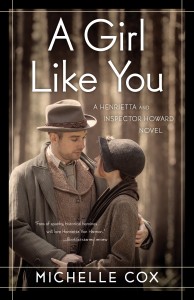Why You Should Choose A Hybrid – An Insider’s Guide
 As I’m sure you’re well aware by now, there are several different types of publisher out there and ways to go about securing one. Much information already exists regarding traditional and self-publishing in blog or tweet form (that’s supposed to be a joke), so we won’t waste any time on those.
As I’m sure you’re well aware by now, there are several different types of publisher out there and ways to go about securing one. Much information already exists regarding traditional and self-publishing in blog or tweet form (that’s supposed to be a joke), so we won’t waste any time on those.
Alternately, this Guide is all about the mysterious third way – the hybrid press, which I can perhaps shed some light upon, having chosen a hybrid myself for my soon-to-be-released novel, A Girl Like You.
Here’s how it happened:
Sometime in 2013 I attempted to publish a different novel with the Big 5 (foolishly, I see that now) – a large, unwieldy, brilliant type of saga that went on and on for 240,000 words, entitled Love’s Labor Found (no pun intended). After about six long months of searching for an agent or a publisher for this big baby, I rather cleverly deduced that it was going nowhere. (Quick aside: If your book is over 120,000 words, give up now. Don’t think you can change anybody’s mind by waving copies of the Goldfinch or Outlander in front of them. They could care less when you wave big books at them. My advice is to start over.)
Start over is what I indeed did, determined to create something more publishable. I’d show them! I steamed. I’d write something short and catchy and, well, you know, more enticing. More sex! More violence! Well, maybe not, but something more marketable, anyway. Thus, A Girl Like You – a shorter, more exciting mystery/romance set in the 1930’s – was born. And I decided to make it into a series, just for a bit of extra mileage.
Confused about what to do with it, though, and considerably exhausted at the prospect of having to start all over with the big list of agents, I decided that the next logical thing to do would be to attend a writers’ conference to learn more about this strange world of publishing that I was trying to break into.
After sitting through various workshops, however, in which the rather sad state of publishing was elaborated upon, including an inordinate number of horror stories about the Big 5, my enthusiasm began to decidedly ebb by the minute. After two days of this drama, I was no longer sure I even wanted a deal from the Big 5, as if it was somehow synonymous now with making a deal with the devil.
Nervously weighing up my options, which still seemed dismal despite my new novel tucked neatly under my arm, I wandered into yet another conference room in which a relatively new publishing model, something called the hybrid press, was being explained. Slowly I began to come out of my depressed fog as I eagerly listened to the presenter and even began scribbling down some disjointed notes. Filled with new hope, I dashed home and quickly began to research a number of hybrids (okay, only two), and what I learned further intrigued me.
Basically – here’s the secret reveal – the hybrid (as one would expect) lives somewhere in the space between traditional and self-publishing and thereby enjoys the best of both worlds. The obvious con is that you have to pay for your baby’s birth, true, but the obvious pro, among many, is that you retain full parental rights. In other words, after being vetted (yes, there is a submission process, and yes, people do get turned away) and paying a fee (some more so than other’s – check around), you in turn receive editing, proofing, interior layout, cover design, uploading to various sales channels and – here’s the key – traditional distribution. Likewise, you retain complete editorial control and all rights and receive a larger percentage of the royalties than dribbled out by the Big 5.
 At this juncture, I had to ask myself what my motive for getting a book published really was. Sure fame, fortune and prestige would be nice, but what I really wanted, I realized, was to be published and to be published well. And after looking over the options, I decided that the traditional route – in its current state of antiquity – simply couldn’t deliver that. The thought of giving up all control over the cover, design, and edits; giving up foreign, film and audio rights; as well as receiving no or little advance, no marketing to speak of, and less royalties just for the apparent prestige of a Big 5’s stamp on the spine of my book suddenly seemed, well, idiotic.
At this juncture, I had to ask myself what my motive for getting a book published really was. Sure fame, fortune and prestige would be nice, but what I really wanted, I realized, was to be published and to be published well. And after looking over the options, I decided that the traditional route – in its current state of antiquity – simply couldn’t deliver that. The thought of giving up all control over the cover, design, and edits; giving up foreign, film and audio rights; as well as receiving no or little advance, no marketing to speak of, and less royalties just for the apparent prestige of a Big 5’s stamp on the spine of my book suddenly seemed, well, idiotic.
And once I came to that conclusion, the rest was easy. After careful thought (okay, an hour) I determined that I would forgo the Big 5 and submit A Girl Like You to a hybrid. Only for a moment did the irony strike me that I had specifically written this novel to be more marketable, more attractive to an agent or a Big 5 publisher, and here I was, with my new slimmed-down model, completely cutting them out of the picture, not even giving them the chance to turn me down. But I didn’t regret it for a minute. Happily, my novel was accepted by She Writes Press, and I haven’t looked back once.
I won’t further attempt to sway you toward the hybrid model, dear readers, but you should at least consider it. Just remember that the vast vista of publishing is changing constantly these days, and, well, it’s exciting to be part of something new.
—
Visit her page on Facebook https://www.
Category: Contemporary Women Writers, How To and Tips
Comments (9)
Trackback URL | Comments RSS Feed
Sites That Link to this Post
- Monthly Memo – November 2016 - She Writes Press | November 29, 2016
- Monthly Memo – April 2016 | She Writes Press | April 7, 2016
- Friday Five - Radio, Regrets and Reality - BookSparks | April 1, 2016

























I am also a hybrid published author, in this case, via Booktrope, and my experience was similar to yours, Michelle, in making the choice to hybrid publish. I had already heard the horror stories about the big 5 and I decided early on not to waste my time even knocking on that door. I attended my first writer’s conference last fall at SiWC, shortly after my Booktrope acceptance, and in one of those classes on publishing, the presenter put forward the current stats from Hugh Howey’s (if not award winning, it should be) statistical arm, Author Earnings, which declared the following: the average traditionally published mid list author can expect annual earnings of $500 -1000 a year; the self published author between $1000 – $2000 a year, and the Hybrid author from $3,000 – $5,000 a year. For those who market and really do the work, Hybrid gives you the best chance of success, for all the reasons you discuss above. Booktrope does not have a fee to publish, by the way. You pay nothing, until after publication, and then only for paperback copies (after a certain free amount) at a reduced cost, and for marketing that you wish to do, outside of their offerings (they have an internal promotional company they have started). For me, this is the model I was searching for, and will never look back.
Hi, Susan! Thanks for your comment. It’s so nice to hear from other authors who have gone the hybrid route. I’ve heard wonderful things about Booktrope, and I’m also a fan of Hugh Howey. While hybrid publishing might not be for everyone, it certainly made the most sense to me as well. I think we will see more and more hybrids burst onto the scene as traditional publishing continues to raise the bar of entrance to include only a select few, and self-published authors realize the limits of that model, particularly the distribution component. Nice to have met you!
Sorry, but I can’t see any “insider’s guide” in this article. It ends before it gets to that point. I understand the difference and the allure of pay publishing. It’s no different than hiring a person to paint your house, do your taxes, or frame your artwork–yes, you can learn to do it yourself, but it’s not for everyone. It’s been around forever–someone had to publish the high school yearbooks and family histories. Okay, the article is about the “why” not the “how,” but it’s in comparison to the big five, and ignored independent publishers. The author misunderstands what “traditional distribution” means. Print on demand is not at all the same thing.
Hi, Suzan! Thanks for your comments. The title “Insider’s Guide” was actually meant to be a bit tongue-in-cheek! And the article as a whole was meant to be a light-hearted take on what it means to publish with a hybrid press and not a comprehensive guide. Actually, by “hybrid,” I mean a small, independent publisher. For example, the publisher I am currently working with, She Writes Press, offers both POD and Off-Set printing depending on what the projected sales will be, the discussion of which, I might add, the author is a part of, just like every step of the publishing process, which is one of the advantages to contracting with them. And She Writes does offer traditional distribution through Ingram, not extended distribution or merely fulfillment. We are represented by Ingram sales reps who routinely sell our books into traditional accounts, including libraries. It seems there is a lot of misinformation floating around out there. Hope this helps! What has been your publishing experience? I always love to hear from other authors.
As a fellow She Writes author, I would add that some of the women who have chosen She Writes Press have done so after already having had a book published with traditional press – and those that I have spoken with reported being very happy with that choice. I applaud those courageous pioneers that are out starting publishing companies that offer a professional alternative to the Big 5 (now, Big 4 with the Penguin/Random merger).
Thanks, Connie, for your kind comments! I applaud those who are trying to do something outside the box as well.